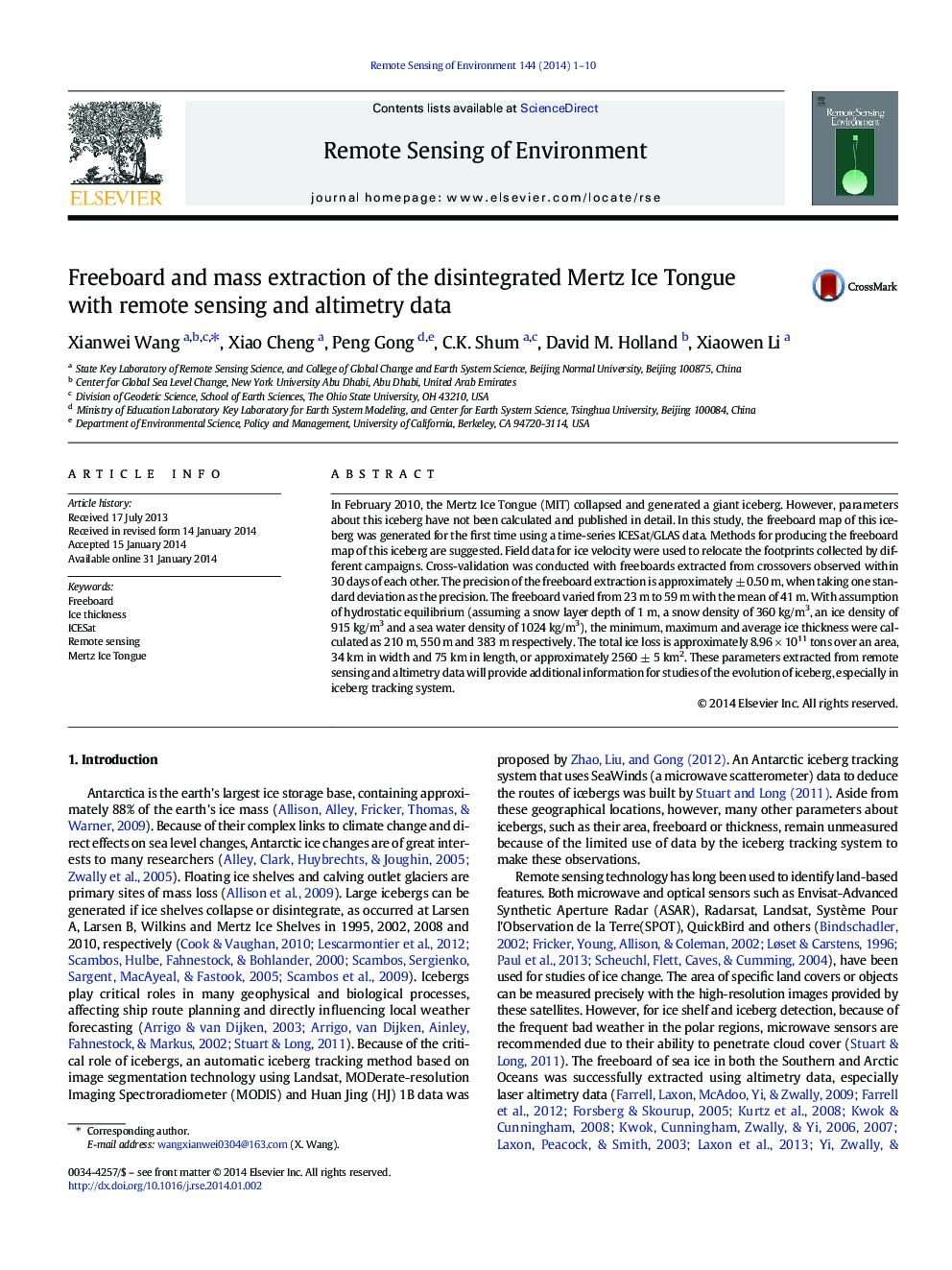| Article ID | Journal | Published Year | Pages | File Type |
|---|---|---|---|---|
| 6346786 | Remote Sensing of Environment | 2014 | 10 Pages |
â¢Demonstrate feasibility of remote sensing data to measure parameters for icebergâ¢The evolution of freeboard and mass of the disintegrated Mertz Ice Tongueâ¢New method of ICESat processing to produce an iceberg freeboard map was observed.
In February 2010, the Mertz Ice Tongue (MIT) collapsed and generated a giant iceberg. However, parameters about this iceberg have not been calculated and published in detail. In this study, the freeboard map of this iceberg was generated for the first time using a time-series ICESat/GLAS data. Methods for producing the freeboard map of this iceberg are suggested. Field data for ice velocity were used to relocate the footprints collected by different campaigns. Cross-validation was conducted with freeboards extracted from crossovers observed within 30 days of each other. The precision of the freeboard extraction is approximately ± 0.50 m, when taking one standard deviation as the precision. The freeboard varied from 23 m to 59 m with the mean of 41 m. With assumption of hydrostatic equilibrium (assuming a snow layer depth of 1 m, a snow density of 360 kg/m3, an ice density of 915 kg/m3 and a sea water density of 1024 kg/m3), the minimum, maximum and average ice thickness were calculated as 210 m, 550 m and 383 m respectively. The total ice loss is approximately 8.96 Ã 1011 tons over an area, 34 km in width and 75 km in length, or approximately 2560 ± 5 km2. These parameters extracted from remote sensing and altimetry data will provide additional information for studies of the evolution of iceberg, especially in iceberg tracking system.
